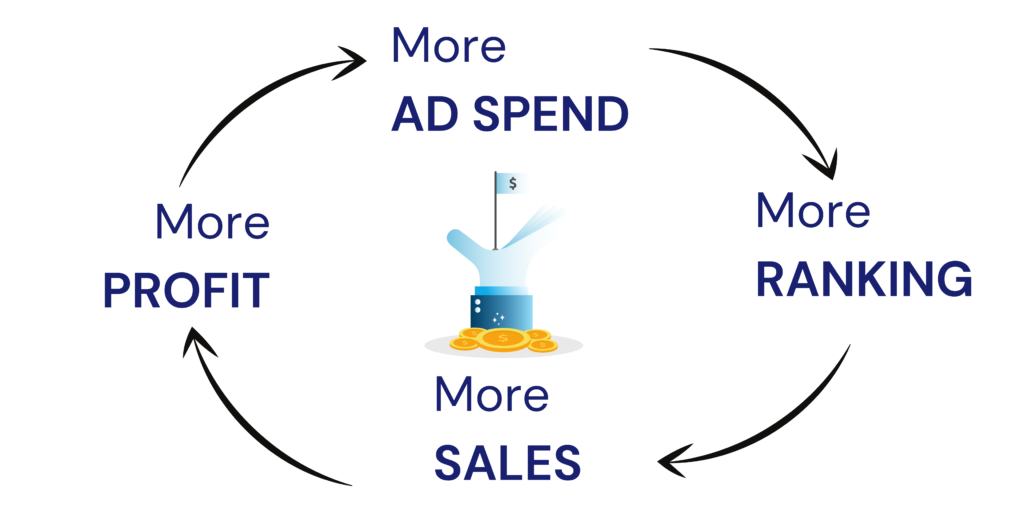
Selling on marketplaces in 2022: advice from an expert
70% of global sales will be generated by marketplaces by 2022, according to Gartner Predict. There are currently around 1 million e-commerce websites worldwide, including 15,000 marketplaces. These represent 1.5% of websites, but they already generate 50% of global e-commerce turnover.
This marketplace model is radically changing the e-commerce landscape and implies the need for all SMEs to adapt their digital strategy to meet consumer expectations. It is, therefore, more than necessary, whatever your activity, B2C or B2B, to take into account the role of marketplaces in 2022 and what they can bring to your business.
But to do this, you still need to know which marketplaces to choose according to the products you sell…
Which marketplaces to choose depending on the products you sell?
For the past 7 years, we have been managing their presence and growth on marketplaces on behalf of our SME clients. Below we offer you some advice on which marketplaces to choose according to your activity.
In general, you should ideally be present on at least 3 marketplaces. In order to maximize the acquisition of new customers and, of course, to be visible in comparison with your competitors…
There are more than 240 product sales marketplaces in France alone at the time of our last census in June 2021 (which is far from exhaustive). And they all have to find SMEs to enrich their catalog, but also to make themselves visible to ensure sales. As a result, today the 20/80 rule is also respected, with 20% of the major Marketplaces making 80% of the turnover in their sector. But with variations depending on the product category.
And if we take visibility as a basis, which is often in line with the number of sales and turnover generated, we find, according to the latest barometer published by Fevad and Médiamétrie (Panel: 3,000 Internet users aged 15 and over; Nov 2021) the results below:
To begin with, what are the product sales sectors (excluding services) where buyers spend the most on e-commerce: (source Fevad/Médiamétrie)
- 49.2% fashion
- 35.5% beauty, health and hygiene products
- 33.1% on cultural products,
- 32.9% electronic products and household appliances,
- 30.6% food and consumer goods,
- 29.3% sports goods,
- 26.8% games and toys excluding video,
- 26.5% furniture and decoration,
- 23.6% DIY and tools.
How to make my products visible on marketplaces?
Once you have chosen the most suitable marketplaces for your products, you need to know how to make yourself visible in order to generate sales. However, the visibility of your products on marketplaces is above all controlled by algorithms. And it is, therefore, necessary to understand their mode of operation and their differences in detail in order to optimize your visibility as much as possible. We are talking about: visuals, keywords, and their positioning in the product sheet, wording to give emotion, positive reviews, promotional campaigns, fulfillment, stock rotation, etc.
Once you have acquired visibility, you must avoid any incident that could harm the customer experience. As a product that is out of stock, a return rate that is too high, too many negative reviews, etc. This will have a direct impact on your ranking and will cause you to lose all the efforts you made previously.
On the other hand, you must not neglect to work on and optimize the transformation rate. This will be achieved in particular by the way you use the marketing tools made available to you by each platform to reassure the customer, transport them into the world of your brand and make a difference with your competitors.
Indeed, this will increase your sales to people who have selected your product sheet. But will also increase your visibility through the algorithms. It is, therefore, necessary to know the criteria of the search algorithms. Which are different for each marketplace, and it is in the detail that the devil hides and especially the performance of your sales.
Our 5 tips for starting or improving your sales on marketplaces
1. Analyse your market before selling on marketplaces
Before entering this distribution network, whether it is new to you or not, we strongly recommend that you study your non-marketplace market carefully.
Then, when you enter a new distribution channel, you need to study :
- The habits of the industry,
- Your current offering,
- How your prospects and customers behave,
- The marketing mix of your competitors,
- Your own sales plan and its projected profitability.
There are 2 types of marketplaces:
Generalists:
Comparable to supermarkets, they offer a wide range of consumer products. Their customers are the general public. They meet a wide range of needs, from basic necessities to branded consumer products. The competition is tough, because there is a lot of traffic, but also because some marketplaces offer their own products, especially necessities. such as Amazon, Cdiscount, and eBay.
Specialists:
They meet specific needs, the clientele is less volatile, as it is often a specialist. Competition is still excessively strong. Examples: FNAC for multimedia and household appliances, ManoMano for tools, Zalando for ready-to-wear.
Finally, there are 2 models of distribution system:
Selling to the marketplace: wholesale/retail
In the same way that you would sell to your reseller or distributor, the marketplace buys your products from you to resell them to its customers. It is an opaque commercial intermediary. You do not have the possibility of accessing and exploiting buyer data due to the RGPD legislation.
Selling via the marketplace: Marketplace
In this case, the marketplace is a sales platform and a visibility medium. You take care of the delivery and sale to the customer. This involves a fixed monthly subscription and a commission.
2. Optimise the content of your product sheets
86% of visitors want to find product information and benefits quickly. This seems obvious, but you need to meet this need in a qualitative way.
Each marketplace has its own listing system and requirements for submitting products. Catalog structures and labels are therefore very important. Above all, you should think about using as many quality images and diagrams as possible to present your products to customers. As Confucius would say: “A picture is worth a thousand words”.
Also, take the time to study the standards required by each marketplace you wish to integrate. This will ensure that your products are listed and therefore visible.
When you register, they provide you with documents to fill in to register your products. This will already give you some tips on how to improve the referencing of your offer by using the right keywords and the right presentation of the appropriate content.
For example, to sell on AMAZON, focus on product sheets that have bullet points, or bullets, to present product features. However, to sell on CDISCOUNT, it is not necessary to make this kind of presentation. Because it is not taken into account by the platform’s algorithm.
3. Differentiate your offer on marketplaces
If you have the opportunity, offer exclusive and differentiating products to better promote your offer on the marketplace.
Finally, you will avoid cannibalizing your sales from your traditional distribution channels. This means that it would be preferable to allocate a specific strategy, communication plan, and marketing plan to this channel.
An example of a marketplace strategy: offering end-of-series products to a wider target group and clearing stock without discounting the product price.
Another example: a low-value product with a selling price of less than €20 will not make a profit. The costs incurred by the marketplaces do not allow for a sufficient margin. It is therefore recommended to sell it in batches.
Some companies that sell on marketplaces set up SMUs, or Strategic Market Units. That allows them to differentiate their distribution channels with dedicated teams and marketing and communication strategies. This allows them to create incremental revenue.
4. Improve credibility and brand awareness with customer reviews
Marketplaces work like a search engine: the more qualitative the content, the higher it appears on the search pages, the more it is sold and the more it is seen as qualitative. It is a virtuous circle that you need to take into account in your strategy. If you respect these first principles, your products will have better visibility and will generate more sales.

To further boost this phenomenon, customer reviews are crucial to highlight the satisfaction that your products bring. In addition, the quality and quantity of reviews have an impact on the algorithm of the marketplaces and will enable you to stand out better in the ranking.
So, as soon as you launch your activity on the marketplaces, encourage your customers to leave reviews and ratings to increase interaction and thus the visibility of your offer.
In addition to improving your visibility, they will allow you to get customer feedback to improve your offer.
5. Vary your marketplaces
Once you generate turnover on a marketplace, and the processes are mastered, we advise you to deploy on other platforms to reduce your dependence.
This can be comfortable and efficient, but it is dangerous for the stability of your business. It is based on a communication and distribution channel that brings together many players and therefore many potential failures: this is the major risk to avoid.
In addition, large marketplaces tend to make decisions without the approval of their customers, which can be disabling for your business.
So using other marketplaces allows you to spread the risk over several distribution channels.
As you would not rely on a single customer, do not rely on a single distribution channel.
Finally, by using several marketplaces you will be able to collect different customer feedback and link them to continuously improve your offer.
The real difficulty for an SME is to give itself the means to succeed
The market observation is that today, many decision-makers are disappointed by the results of sales on this channel, but have they well defined their strategy beforehand?
Often the answer is no, due to a lack of knowledge of the subject. In addition, they have generally underestimated the resources and skills needed to manage and optimize this channel.
In general, in an SME, these tasks are entrusted to and managed by operational staff in addition to their main function, which results in insufficient quality and/or works overload.
However, in order to perform well, you must have the skills in-house on all these subjects and above all a permanent watch to monitor the evolution of the details of these algorithms which take place several times a year, at the rhythm of the change in the purchasing behavior of users.
Moreover, if you do not wish to have these skills in-house due to a lack of resources or time, other solutions exist. Why not discuss it? You can contact us by email, we would be delighted to discuss this with you.
Are you interested in marketplaces and would you like to learn more about the subject? Have a look at the articles in this category, you might like them.